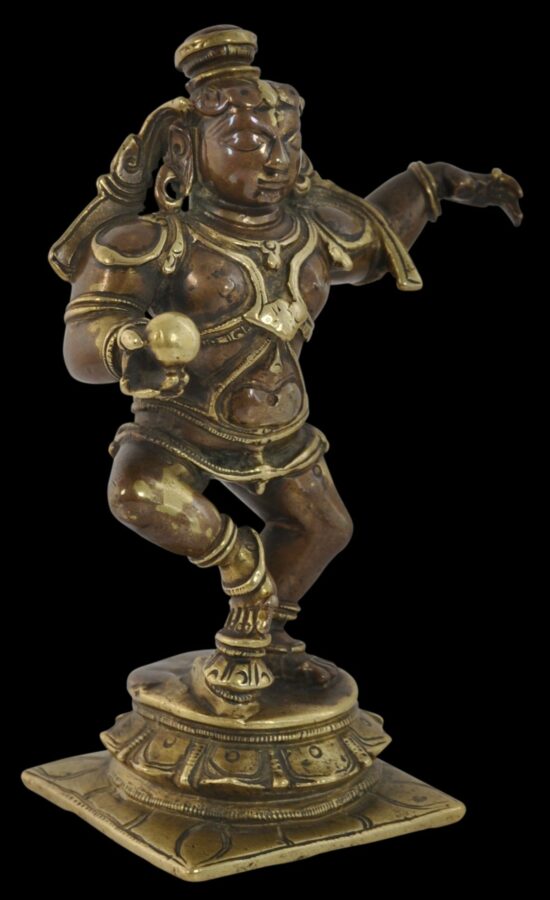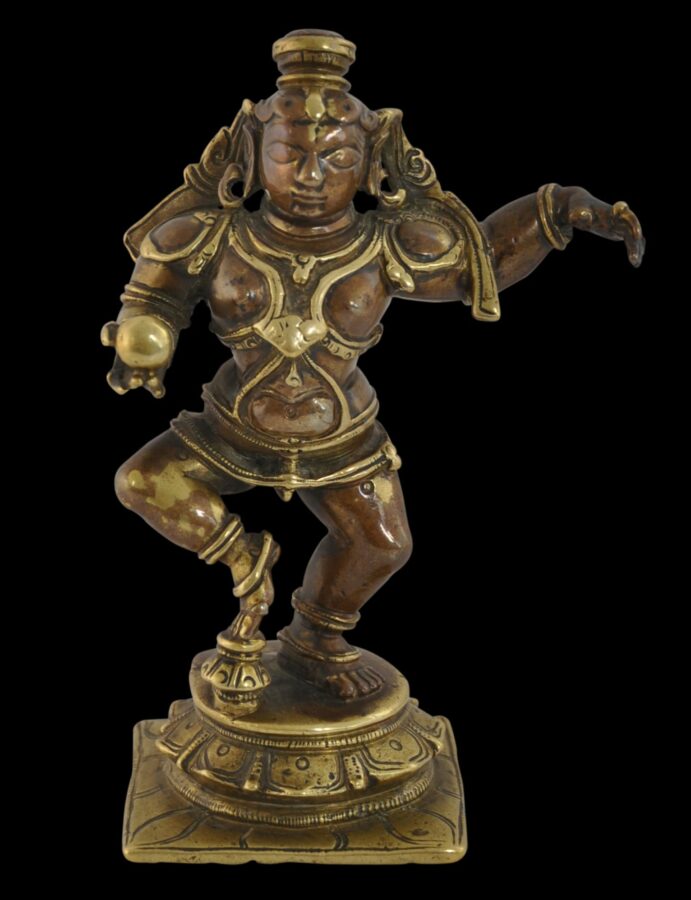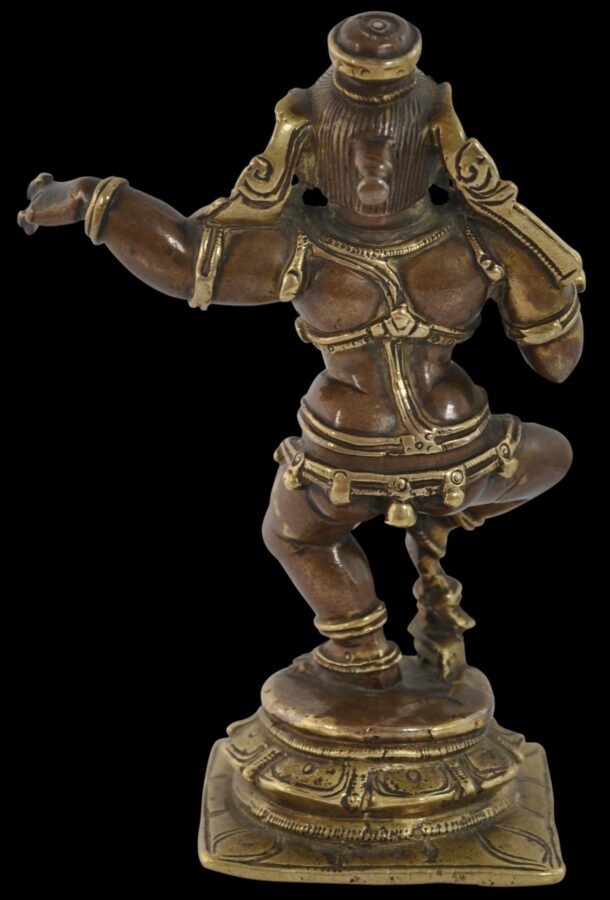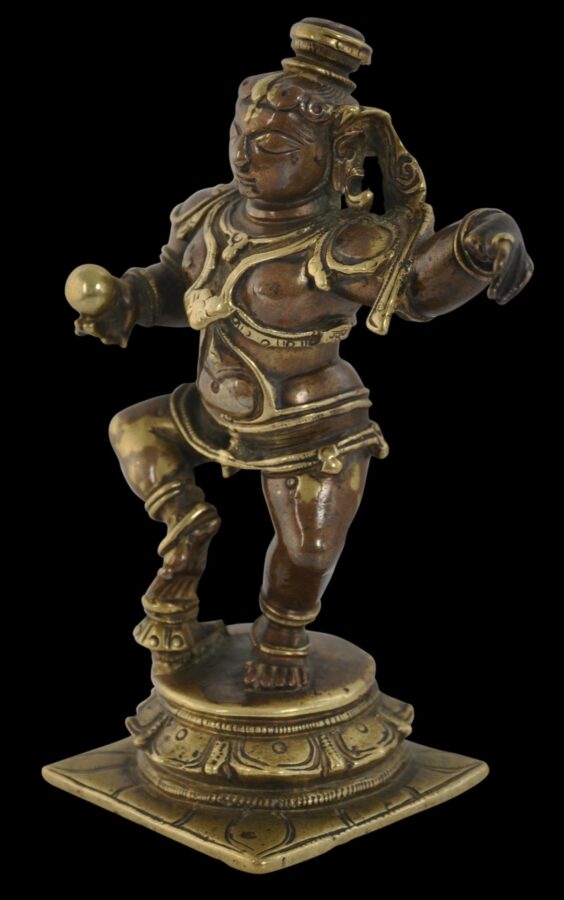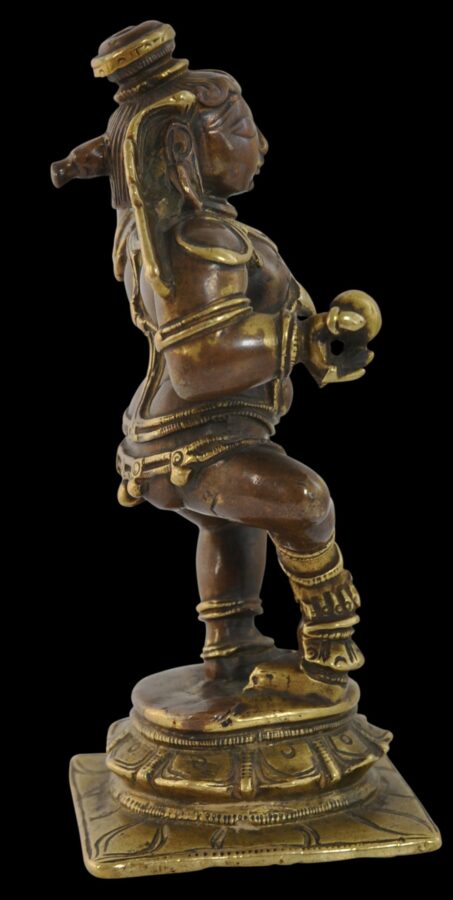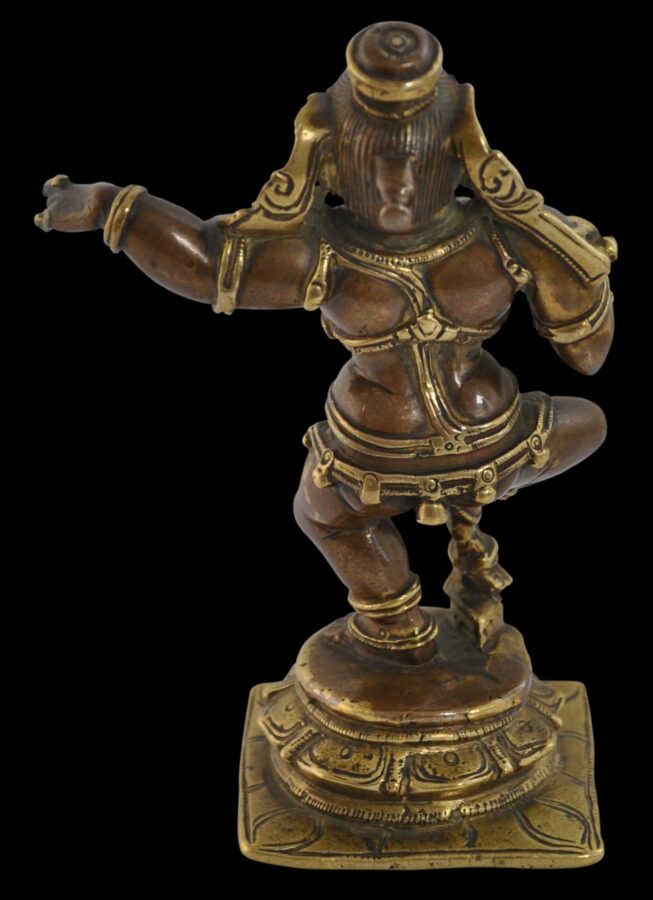This decorative image of the dancing, infant Krishna, intended for the domestic shrine of a wealthy household, stands on a lotus base with the right foot in a dance pose and elevated on a lotus bud. The figure is naked other than for ample necklaces, waist bands, anklets and arm bands. The left hand is raised, and the right hand holds a butter ball.
The image has been decorated with what is known as the Ganga-Jumna technique whereby each object has been cast in bronze and finished with applied brass highlights. The term Ganga-Jumna relates to India’s two largest rivers which traditionally have had two different colours on account of differing types of soil sediment suspended in their waters. This type of work was done in the 18th and 19th centuries in and around Tanjore (now known as Thanjavur), in Tamil Nadu, in southern India.
A similar example illustrated in Pal (2016, p. 38) is given a 17th century dating.
The figure has ample puja wear from ritual handling and bathing. Ganga-Jumna bronzes are uncommon. This example is more ample than most.
References
Pal, P. (ed.), Puja and Piety: Hindu, Jain, and Buddhist Art from the Indian Subcontinent, Santa Barbara Museum of Art/University of California Press, 2016.


